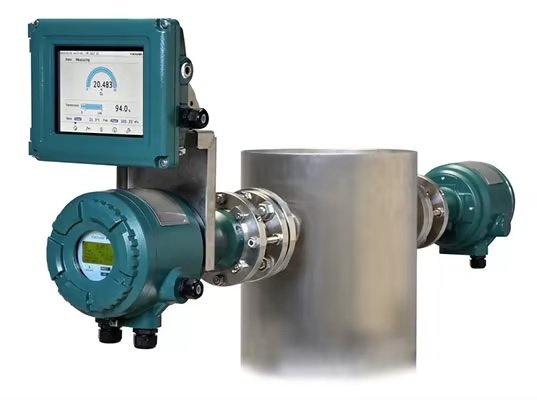Calibration is a critical aspect of maintaining the accuracy and reliability of gas analyzers, especially in applications where precise measurements are essential. Hydrogen chloride (HCl) is a corrosive and hazardous gas commonly found in industrial processes, necessitating accurate monitoring to ensure safety and regulatory compliance. Tunable Diode Laser Absorption Spectroscopy (TDLAS) has emerged as a leading technology for HCl detection due to its sensitivity and selectivity. In this blog, we will delve into advanced techniques for calibration in HCl TDLAS gas analyzers, aimed at optimizing performance and ensuring accurate measurements.
Understanding HCl TDLAS Technology
Hydrogen chloride is a byproduct of various industrial processes, including chemical manufacturing, metal refining, and combustion. Its corrosive nature and adverse health effects necessitate stringent monitoring to prevent exposure and environmental contamination. TDLAS technology offers a reliable solution for HCl detection by leveraging the absorption of specific wavelengths of light by HCl molecules. This allows for precise quantification of HCl concentrations in gas samples, even in complex environments with interfering gases.
Importance of Calibration
Calibration is the process of adjusting and verifying the accuracy of gas analyzers by comparing their measurements to known reference standards. In HCl TDLAS gas analyzers, calibration is crucial for maintaining measurement integrity and ensuring compliance with regulatory requirements. Proper calibration not only enhances the reliability of gas concentration readings but also extends the lifespan of the analyzer and reduces the risk of false alarms or errors.
Advanced Calibration Techniques
Zero Calibration:
- Purpose: Zero calibration establishes the baseline reading of the gas analyzer in the absence of the target gas (HCl).
- Technique: Introduce a zero gas (e.g., nitrogen or clean air) into the analyzer and adjust the baseline reading to zero.
- Importance: Zero calibration eliminates any offset or drift in the measurement caused by ambient conditions or instrument drift.
Span Calibration:
- Purpose: Span calibration ensures accurate measurement across the full range of HCl concentrations.
- Technique: Introduce a known concentration of HCl gas into the analyzer and adjust the reading to match the expected value.
- Importance: Span calibration accounts for sensor drift and linearity errors, ensuring precise measurements at different concentration levels.
Multi-Point Calibration:
- Purpose: Multi-point calibration provides calibration at multiple concentration levels to account for non-linear responses and improve accuracy.
- Technique: Conduct calibration using gas standards at several concentration levels spanning the operating range of the analyzer.
- Importance: Multi-point calibration enhances the accuracy of gas analyzers by calibrating them at various points along the measurement range.
Dynamic Calibration:
- Purpose: Dynamic calibration involves continuous monitoring and adjustment of calibration parameters in real-time to compensate for changing environmental conditions or sensor drift.
- Technique: Implement algorithms that dynamically adjust calibration factors based on sensor readings and environmental variables.
- Importance: Dynamic calibration ensures accuracy and reliability under dynamic operating conditions, minimizing the need for manual intervention.
Best Practices for Calibration
- Regular Maintenance: Perform routine calibration checks according to manufacturer recommendations to ensure optimal performance and accuracy.
- Use Certified Gas Standards: Use certified gas standards with known concentrations for calibration to maintain traceability and accuracy.
- Document Calibration Procedures: Keep detailed records of calibration procedures, including dates, calibration factors, and any adjustments made.
- Monitor Drift: Monitor sensor drift over time and recalibrate as necessary to maintain accuracy and reliability.
- Train Personnel: Provide training to operators on proper calibration procedures and the importance of calibration in maintaining measurement integrity.
Future Trends and Outlook
As technology continues to evolve, the future of calibration in HCl TDLAS gas analyzers holds several promising developments:
- Automation: Advancements in automation technologies will streamline calibration processes, reducing the need for manual intervention and improving efficiency.
- Remote Calibration: Integration with remote monitoring and control systems will enable remote calibration of gas analyzers, facilitating maintenance and calibration activities in remote or hazardous environments.
- Advanced Algorithms: Implementation of advanced algorithms and machine learning techniques will enhance calibration accuracy and adaptability, especially in dynamic operating conditions.
Conclusion
Calibration plays a crucial role in optimizing the performance of HCl TDLAS gas analyzers, ensuring accurate and reliable measurement of HCl concentrations in industrial environments. By employing advanced calibration techniques and following best practices, operators can enhance the accuracy, reliability, and longevity of gas analyzers, ultimately contributing to improved safety, regulatory compliance, and operational efficiency. As technology continues to advance, the future of calibration holds exciting possibilities for further enhancing the capabilities of HCl TDLAS gas analyzers and meeting the evolving needs of industrial gas monitoring applications.
Read More: What is system_application_read_quiz_0006
